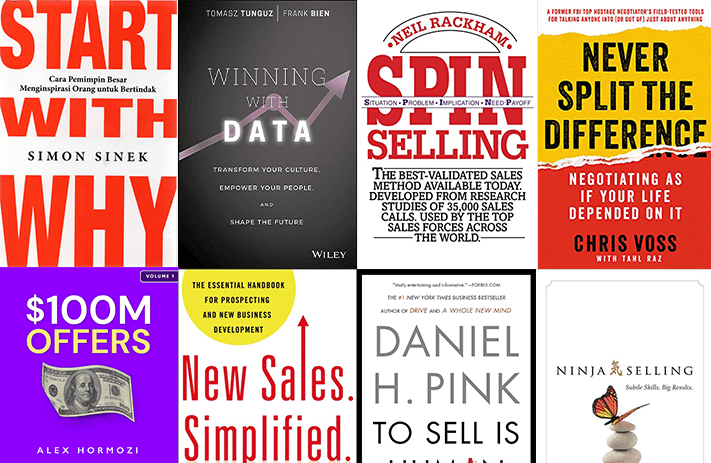
Click the button to start reading
How to Choose Firm but Ambitious Goals for Your Business
Most of us know that it’s focusing on the process that brings long-term success, not fixating on achieving specific goals. If your goal is to hit $100,000 monthly revenue and then you do it…what now? Your company’s whole identity was built towards this milestone. Worse, every month you don’t make $100,000 can feel like failure.
By focusing on the process which is most likely to lead to $100k months you can keep going indefinitely—whether you hit $100k or $500k.
But goals are still fundamental to business success. The key is recognizing that there are different types of goals and some are more important than others. In this article we’re going to look at setting firm, valuable business goals and defining them in such a way as to make them more achievable and impactful.

Create your broad goals
If you’re an entrepreneur that’s just left their stable day-job, or you’ve got a small-but-steady operation you’re looking to keep on-track, then it can pay dividends to not overcomplicate goal setting.
We’re going to share a strategy for creating bigger, bolder and more specific goals (see next section: “SMART goal setting”) but it’s completely acceptable to start with less concrete goals while you’re still getting established. Until you reach that stage, taking such a granular strategic approach to goals may even hinder progress rather than enable it.
Step 1—Consider your personal ambitions and responsibilities
A major reason why young businesses fail is because their founders didn’t put enough thought into making their work sustainable. Working 80-hour weeks to get your product off the ground is admirable, but if you’re ruining your sleep, eating takeout every day, your exercise regime has fallen by the wayside and you barely see your kids anymore…you can see how it becomes unsustainable.
Business success is awesome, but it’s only one aspect of your life. Think hard about the hobbies, habits, friends, or activities you definitely don’t want to give up; the ones that help sustain your healthy, balanced life and therefore sustain your success in business.
At the same time, consider your responsibilities. If you’re a mum of 2 and want to be super present during your kids’ childhoods, how you build your business will need to work around this. Other factors to consider might be:
- If you’re in education, how many hours a week do you need to commit?
Are you still working another job? - When do you want to have vacations? Are there times during the year you need to have less work?
- How many hours can you actually commit to every week (including all those lost hours between tasks, commuting, making tea, and banging your head against the wall)?
- Do you have hobbies you want to maintain?
- What are the non-negotiables when it comes to time with your kids, your pets, your spouse, or your friends?
Step 2—Understand the meaning of your business
This is a relatively small point but an important one. When you’re caught up in the minutiae of running your business, it’s very easy for your internal compass to go haywire. You can start going down paths that don’t really help you fulfil the vision you had for the company in the first place. It’s important to make clear what that vision is, or what your central motivation is, so you can stay true to it over time.
There are no limits on what this might be and each person’s answer will be different. Your purpose might be “making enough money to provide for my family”. It might be “I want to be a millionaire” or “I want to help people” or because you believe in the righteousness of what you’re doing. Whatever it is, just note this down; if you ever get lost down the road, use this to reorient yourself.
And now to goal setting!

Step 3—Set Long, Medium and Short-term goals in that order!
Say you’ve launched a legal advisory firm because you truly believe in the power of the law to protect and help vulnerable people. That’s a wonderful meaning or “why” for your business—but “helping people” isn’t a strategic goal.
You need to have a long, hard think about what success in your business would actually look like. Ignore “making $X per month” for now. You want to start with a long-term goal (because shorter-term goals are all about achieving the longer term ones) and consider what your business would look like if it was succeeding and derive goals from there. Here are a few examples:
- Marketing business—The business is successful when my clients are signing 6+ month retainers, every team member is being paid fairly + not overworked, we have no debt, and we’re being approached regularly by new prospects.
- Legal consultancy—The business is successful when we’ve developed a reputation for honesty and transparency in the industry and when we’re winning 3+ cases every month.
- Tech company—The business is successful when 90% of our customers leave 5* reviews, when journalists come to us for PR stories, and we’re making net profit every month.
Notice that these aren’t precise goals just yet. They’re more like visions of how the future will look if we follow a certain path. Now is the hard part: coming up with the goals required to get you there. What you need to do is visualize the steps required to make these visions a reality.
For the marketing example, the road to 6-month retainers might involve:
- Creating sellable “packages” at a fixed price, so customers know what they’re getting upfront
- Curating a brilliant client experience so customers want to stay
- Building a reporting system so you can show clients exactly what their money is doing every month
These are long-term goals. You break these down in shorter goals and then break those down even further. One popular system is the 3 year, 3 month, and 3 week goals—by steadily achieving your 3-week goals, the 3-month goals and eventually 3-year goals are slowly accomplished.

Step 4—Temper your goals with realism
If you’ve thought carefully about your goals and aligned them with your business’s values and your personal responsibilities, you might not need this stage. But in our experience, most young companies set overly ambitious goals. Goals that are just not possible over a 3-week or 3-month span.
Remember you’re going to review your goals regularly. It’s much better to start with something achievable and, if you’re consistently hitting your goals, aim higher if necessary. But if your goals are keeping you on-track for the future you want, don’t heap extra pressure on yourself unnecessarily; just keep on plugging away!
Enhance your goals with the SMART system
The process we’ve just gone through allows you to create goals which are true to your business. However, they are still relatively broad. We use the SMART system to refine and validate our goals. It’s an acronym that stands for Specific, Measurable, Achievable, Realistic, and Time-bound—the 5 standards against which we sharpen our goals.

Specific
The more specific our goals, the more likely we are to follow-through and deliver on them. The simplest way to make goals specific is to answer the 5 W’s for each goal:
- Who is involved in this goal?
- What is the desired final outcome?
- Where is this goal to be achieved?
- When do we want to achieve this goal?
- Why is this goal important?
Measurable
How will you measure the success of your achievements? Even if it’s not 100% reliable, it’s important to create a metric of success for each goal. While sometimes this is straightforward (e.g. reaching a global revenue target) you may have to get creative in other cases.
“What is measured is improved.” Words to live by!
Achievable
We have touched on this already, but your goals must be achievable. So if you have goals which are particularly ambitious, make sure you consider:
- Do I have the time, resources and people to reach this outcome?
-
- If not, what needs to change?
-
Having powerful and ambitious goals is fantastic, but if the corresponding workload leads to burnout or frustration within the team, it might be better to pair back the goals slightly and make the road towards those goals sustainable.
Relevant
This is probably the hardest guideline for some business owners to come to grips with. Is this goal truly relevant for the business? Is this the best way to use your and your team’s time and resources? Is this the right time to pursue this goal?
Sometimes we create fantastic ideas but the company just isn’t ready to take them on. Or perhaps the industry itself isn’t in the right state to accommodate your goals. More challengingly, business owners need to accept that sometimes they aren’t the right person to lead a specific goal drive.
Take a holistic view of your goals and put them in their full context before taking action.
Time-bound
Every goal needs a deadline. Because your company will run through a continuous evolution of new goals, you need to put a firm time cap on each one. Otherwise you run the risk of never quite following through and therefore stalling on forward progress.
Time is one of the areas where companies are most likely to be overly-ambitious. Try to consider the realistic capacity of your workforce, the effect of external stakeholders, the current economic environment—anything which might significantly impact your ability to reach the goal. Then assign an ambitious but genuinely achievable deadline.
Remember as well that some goals are more mission critical than others. You can afford to set generous, slow deadlines on those less important goals. Setting ambitious targets across the board will require exceptional management of all people and resources.

Make sure your follow through
If you’ve managed to commit and put the effort into creating goals which align with your personal life and ambitions, are S.M.A.R.T and staggered across the short, medium and long term, then you’ve set your business up extremely well.
Unfortunately, it’s the execution which often lets companies down. With that in mind, we’ve put together 3 quick points that might help you follow through and deliver on reaching these fantastic goals.
Regularly review your goals
This is especially important for longer-term ambitions. What most businesses find is that when they set a plan 3 years into the distance, they rarely ever get there. This isn’t because they “fail” but rather because the nature of the business and its longer-term ambition changes.
And this is fantastic. It means your business is growing and evolving, and hopefully chasing these long-term goals contributes to that change—even if the initial end results themselves don’t come to pass.
So every 6 months, check in on your long-term goals and see if they still represent the right future for your business. You can also use this time to review progress on your other, shorter-term goals: have you been hitting them consistently? Are you seeing the desired results from reaching these goals?
This review period is about keeping you on track, but also keeping your teams motivated by seeing the fruits of their labor pay off.

Celebrate achievements and milestones
This sounds like a tiny factor but it couldn’t be more important. Your staff aren’t machines and neither are you. When you hit any of your goals, acknowledge it. Sure you aren’t going to throw a party for every successful 3-week goal, but you can enjoy it. And for bigger goals, it’s important to celebrate a bit more—it helps everyone in the team to let their stress ease away and believe it was a worthwhile effort.
Some companies will introduce rewards or treats, but simple acknowledgement of good work goes a long way for most employees.
Use a project scheduling tool to up your success rate
Project and task scheduling tools are designed purely to increase your odds of consistently meeting your goals. The ability to see every goal, each team member’s responsibilities and progress, as well as the ability to access all files associated with the work makes building towards goals so much easier.
Teamly is built to help you accomplish projects faster and more efficiently, giving you a clear advantage over the competition by turning every SMART goal into a happily ticked box.
Conclusion
There is definitely an art to setting firm business goals which are ambitious, relevant, feasible and genuinely impactful. By following the process laid out in this article, your business should be able to convert its vibrant energy and ambition into bite-sized, actionable chunks that elevate you to ever-higher levels of success.
To give your business the best possible chance of success, consider signing up for early bird access to Teamly—you won’t believe just how easily you’ll clear your targets!
















